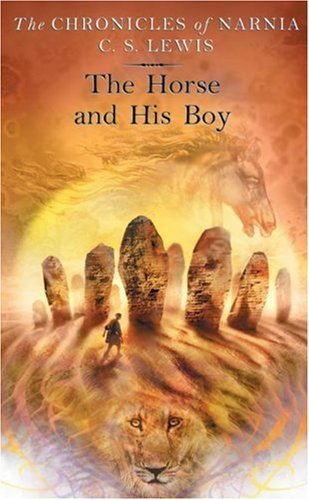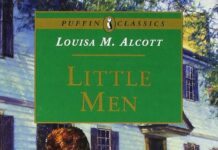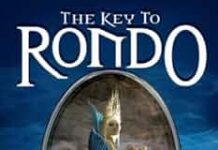Title: ‘
In the enchanting realm of Narnia, where talking animals and brave children come together in the tapestry of adventure and self-revelation, C.S. Lewis’s ”The Horse and His Boy” stands as a unique entry within the beloved Chronicles series. This tale,infused with themes of identity,courage,and destiny,invites readers to traverse not just the sweeping landscapes of a fantastical kingdom,but also the inner journeys of its characters. As we delve into the narrative of Shasta and Bree, two souls yearning for freedom and belonging, Lewis weaves a story that challenges our perceptions of home and self. In this review, we will reflect on the intricate layers of storytelling, the rich moral undertones, and the timeless message that resonates with both young and old, reminding us that every journey—be it on horseback or through life—holds the promise of discovery. Join me as we embark on this reflective exploration of a classic that continues to ignite the imaginations of generations.
Exploring Themes of Identity and Self-Discovery in C.S. Lewis’s Narrative
In C.S. Lewis’s enchanting tale, the journey of Shasta and Bree serves as a profound examination of identity shaped through both external and internal trials. As Shasta embarks on his adventure, he is plagued by feelings of inadequacy and a longing to uncover the truth of his origins. This search for identity resonates deeply, as it reflects the universal quest for self-understanding that many individuals experience. The dichotomy between Shasta’s humble beginnings as a stable boy and his eventual realization of noble lineage emphasizes the idea that identity is not solely defined by birth or circumstance, but also by the choices one makes along the way. As Shasta bravely faces challenges and embraces his true self, lewis subtly urges readers to reflect on their own paths of self-discovery.
Bree, the talking horse, poignantly embodies the struggle between self-perception and reality. Initially trapped in notions of grandeur and past glory, Bree must confront his own weaknesses and insecurities throughout their journey. Through interactions with Shasta and the obstacles they face, Bree learns that true identity lies not in status or appearance, but in courage, authenticity, and companionship. This journey toward self-discovery is beautifully illustrated as both characters evolve, leading to deeper connections with one another. Lewis illustrates that the road to understanding oneself is frequently enough fraught with challenges but is also filled with excitement, growth, and the realization that one’s identity is an ever-evolving narrative.
| Character | Identity Theme |
|---|---|
| Shasta | Journey from anonymity to self-acceptance |
| Bree | Overcoming pride to find true self-worth |
| Aravis | Rejecting societal expectations for personal truth |
| King Lune | Recognition of rightful heritage and belonging |
The Rich Tapestry of Landscapes and Cultures in Narnia and Beyond
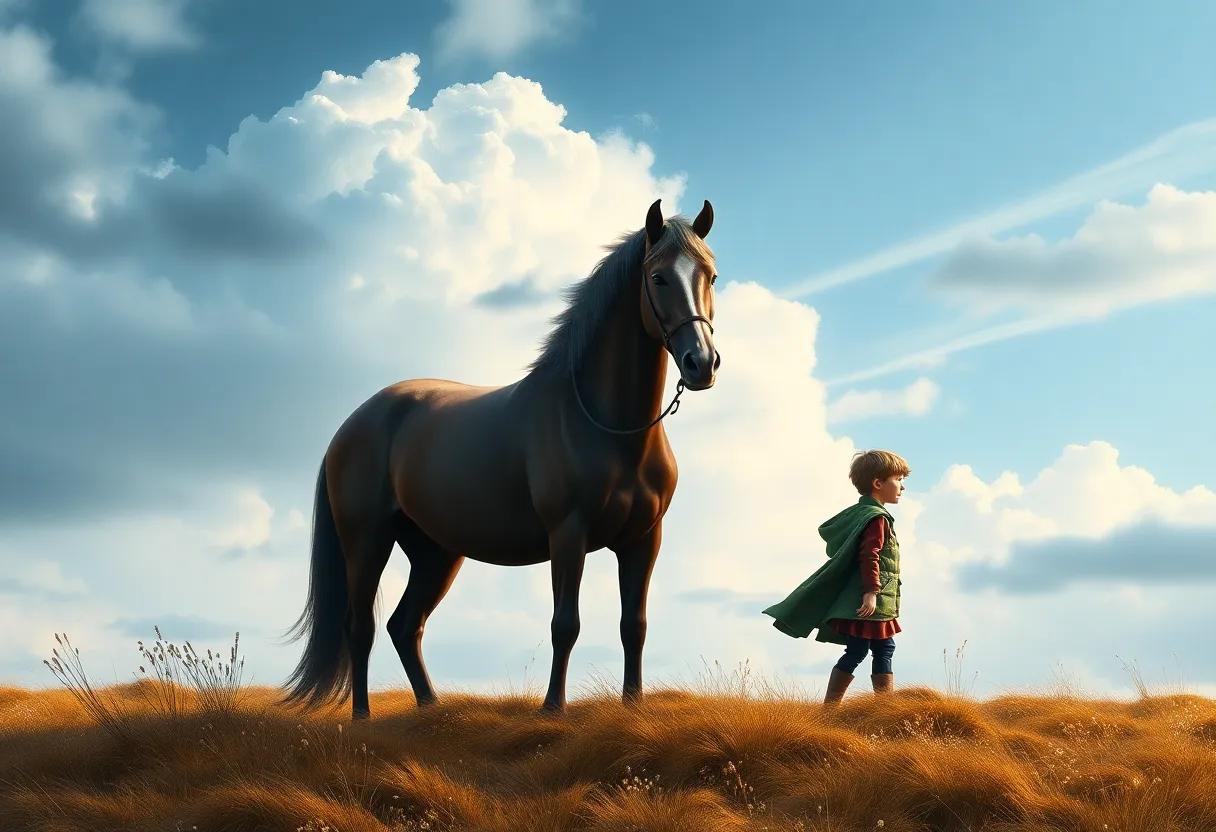
As we traverse the rich landscapes of Narnia, one cannot help but be captivated by the vivid imagery C.S. Lewis paints throughout The Horse and His Boy. From the golden sand dunes of the deserts to the lush green fields of archenland, every setting is imbued with a unique personality that reflects the cultures and traditions of its inhabitants. Think of the bustling marketplaces filled with vibrant colors, where merchants loudly promote their wares, and the serene beauty of the forested hills, a quiet reminder of the enduring harmony between nature and civilization. The detailed descriptions invite readers to immerse themselves in this fantastical world where every corner unveils a new adventure, underscoring the creative diversity found within Narnia’s borders.
The intricate interplay of cultures is highlighted through the experiences of the protagonists, Shasta and Bree. As they journey from the oppressive deserts of Calormen to the freedom of Archenland, readers observe the stark contrasts between the two regions. Rich tapestries of belief and tradition shape the lives of the characters, allowing Lewis to explore themes of identity, freedom, and companionship. This diversity can be illustrated through the characteristics of both cultures:
| Culture | Key Traits |
|---|---|
| Calormen | – Opulent and authoritarian – Rich in trade and customs – Emphasis on honor and strength |
| Archenland | - Humble and egalitarian – Emphasis on freedom and loyalty – A strong bond with nature |
Through these contrasting landscapes and cultures, Lewis encourages readers to reflect on their own identities and the places they call home.The journey of Shasta, who begins as a mere stable boy yearning for belonging, ultimately becomes a profound exploration of self-discovery and the realization that one’s true worth lies not in origin but in the choices made along the way. Each encounter, each landscape further enriches this narrative tapestry, urging us to celebrate the myriad cultures and landscapes of our world, both real and imagined.
Lessons in Courage: Bravery and Friendship through the Eyes of Shasta
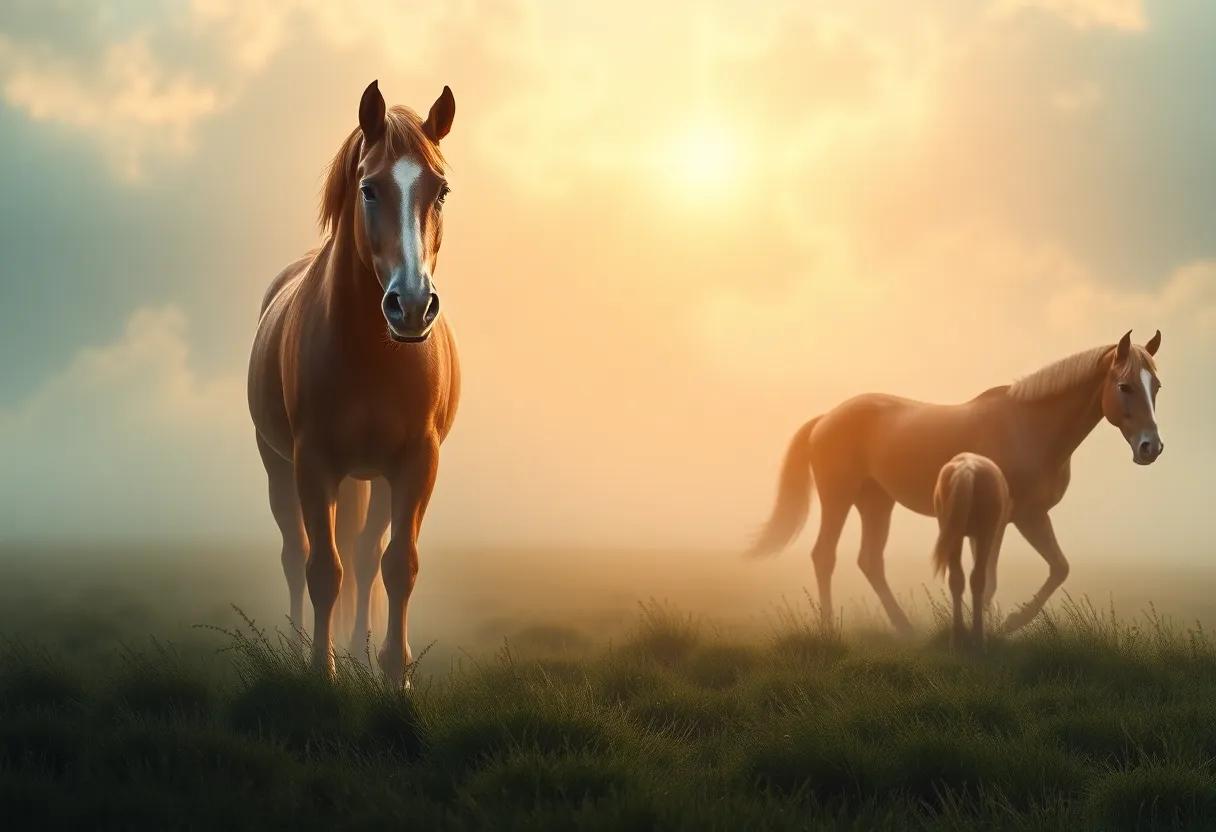
In C.S. Lewis’s enchanting tale, bravery is not merely the absence of fear but the triumph over it, as illustrated through Shasta’s remarkable journey. From the moment Shasta, a young boy with a mysterious past, flees from a life of servitude, he embraces a path laden with uncertainty. His encounters with various characters reveal that true courage often lies within, igniting a spark that transforms him from a timid boy into a valiant hero. Friendship plays an integral role in this transformation; the bond between Shasta and Bree, the talking horse, highlights how companionship can fortify one’s resolve. Together they navigate the challenges of the wild, fostering a mutual respect that transcends their differences, ultimately showcasing the idea that friendship is a source of strength in the face of adversity.
As Shasta grapples with profound fears and self-doubt, he learns that courage is a journey, not a destination.Through the trials he faces—whether escaping the clutches of danger or confronting enemies from his past—Shasta evolves into a symbol of resilience. While trekking towards Narnia, he discovers the importance of loyalty and trust, wich are vital to building meaningful relationships. Throughout this adventure, the themes of bravery and friendship weave seamlessly together, demonstrating that they are vital in overcoming life’s obstacles. The friendship between Shasta and Bree becomes a testament to the idea that reliance on others is not a weakness, but rather a valiant acknowledgment of our shared vulnerabilities.
The role of Fate and Destiny in the Journey of The Horse and His Boy

The journey of Shasta and Bree in C.S. Lewis’s tale is deeply interwoven with the themes of fate and destiny, encapsulating the profound notion that every individual has a predetermined path, yet possesses the agency to choose their route. As they navigate treacherous landscapes and encounter a cast of supporting characters, their progress symbolizes a struggle between external forces and internal choices. Fate, represented through their encounters and the overarching narrative, suggests that their destinies are not entirely in their hands. Instead, events unfold with a sense of greater purpose, as if guided by an unseen force. When Shasta learns his true lineage, it becomes clear that each hardship he faced was a pivotal step towards fulfilling his destiny.
Conversely, destiny is replete with the choices that shape Shasta and Bree’s understanding of themselves and their world. Despite the trials they face, they exercise their free will, making pivotal decisions that influence their futures. The contrast between their initial desires for escape and the ultimate realization of their true paths highlights the nuanced relationship between destiny and personal choice. This duality invites the reader to ponder the extent to which one’s life is shaped by predetermined fate versus individual action, illustrating the beautiful complexity of life’s journey.
| Fate | Destiny |
|---|---|
| Guided by external forces. | shaped by personal choices. |
| Predetermined events. | Actions define outcomes. |
| Characters guided to meaningful moments. | Moral growth through choices. |
animal Companionship: A Deeper Look at Bree and His Transformation

In C.S. Lewis’s heartfelt tale, Bree, the talking horse, emerges as a captivating character symbolizing the journey of self-discovery and the power of companionship. Initially portrayed as a proud and somewhat arrogant steed who yearns for the splendor of Narnia, Bree’s journey transcends the mere physical travel to a deeper metamorphosis. Through his interactions with Shasta, the boy he traverses with, Bree learns the value of friendship and humility. The evolution of Bree’s character from a self-absorbed horse to a loyal companion reflects the themes of identity, belonging, and bravery that resonate throughout the narrative.
The bond that develops between Bree and Shasta not only highlights the power of animal companionship but also serves as a catalyst for both characters’ growth. As they face perilous challenges together, Bree discovers that true strength lies not in pride but in acceptance and vulnerability. Their relationship showcases the idea that companionship can illuminate one’s path, guiding them through uncertainty.Bree’s transformation is a poignant reminder that no journey is faced alone, and that even the proudest heart can learn to lean on others for support.
C.S. Lewis’s Moral Compass: Ethics and Values in a Fantasy Realm

C.S. Lewis weaves a tapestry of ethics and values throughout his narrative in ”The Horse and His Boy,” making it not just a tale of adventure but a profound exploration of moral growth. The journey of Shasta and Aravis serves as an allegory for the tumultuous quest for personal identity and virtue in the face of societal expectations. As they navigate their way from the bustling streets of Calormen to the welcoming lands of Archenland and Narnia,the characters confront choices that challenge their understanding of loyalty,truth,and self-worth.Key themes emerge, capturing the essence of Lewis’s moral compass:
- Friendship: The bond between Shasta and Bree signifies trust and the strength found in unity.
- Courage: Facing fears and embracing one’s true self are pivotal in their quest for freedom.
- Justice: The contrast between the tyrannical rule of the Calormen and the just governance of Narnia highlights the importance of ethical leadership.
Through the enlightening encounters, Lewis encapsulates the complexities of moral decision-making. each character’s journey reflects their choices, revealing a deeper truth about courage and the essence of goodness.The following table illustrates the key transformations experienced by the characters:
| Character | Moral transformation |
|---|---|
| Shasta | From self-doubt to self-acceptance |
| Aravis | From pride to humility |
| Bree | From cowardice to bravery |
| King Edmund | From betrayal to redemption |
Narrative Techniques: The Blend of Adventure and Allegory in the Story
In C.S. Lewis’s captivating tale, the narrative techniques intertwine the exhilarating essence of adventure with the profound layers of allegory. The journey of Shasta, who escapes the clutches of a troubled life, is not just a physical trek; it mirrors the universal quest for identity and belonging.Through a rich tapestry of vivid imagery and dynamic characters, Lewis crafts a story that draws readers into a world where every twist and turn serves a dual purpose. The sprawling landscapes of narnia and the treacherous paths of the Northern provinces become metaphors for the struggles we face as individuals in our pursuit of self-discovery and purpose. Among the elements that shine brightly within this narrative are:
- Symbolic Character Progress: each character embodies distinct qualities that resonate with fundamental human experiences.
- Striking Imagery: Lewis’s detailed descriptions plunge readers into the vibrant world of Narnia,enhancing the emotional depth of the journey.
- parallel Plotlines: The intertwining destinies of Shasta and Bree reveal insights about friendship and courage.
The story deftly utilizes episodic adventures to reinforce its allegorical themes. Each challenge Shasta faces—be it navigating treacherous terrains or outsmarting foes—serves not only as an exciting plot device but also as a vehicle for deeper understanding. This layered approach encourages readers to ponder the moral lessons embedded within the narrative. Furthermore, the dialog brimming with wisdom and wit humanizes the characters, allowing readers to engage emotionally while reflecting on their personal journeys. The following table captures the essence of these dual narrative techniques:
| Adventure Element | Allegorical Reflection |
|---|---|
| Shasta’s escape from slavery | Freedom from self-imposed limitations |
| Crossing the desert | Journey through hardship promotes growth |
| Encounters with Aslan | Divine guidance and the search for truth |
The Power of Choice: Decisions that shape the Destiny of Characters
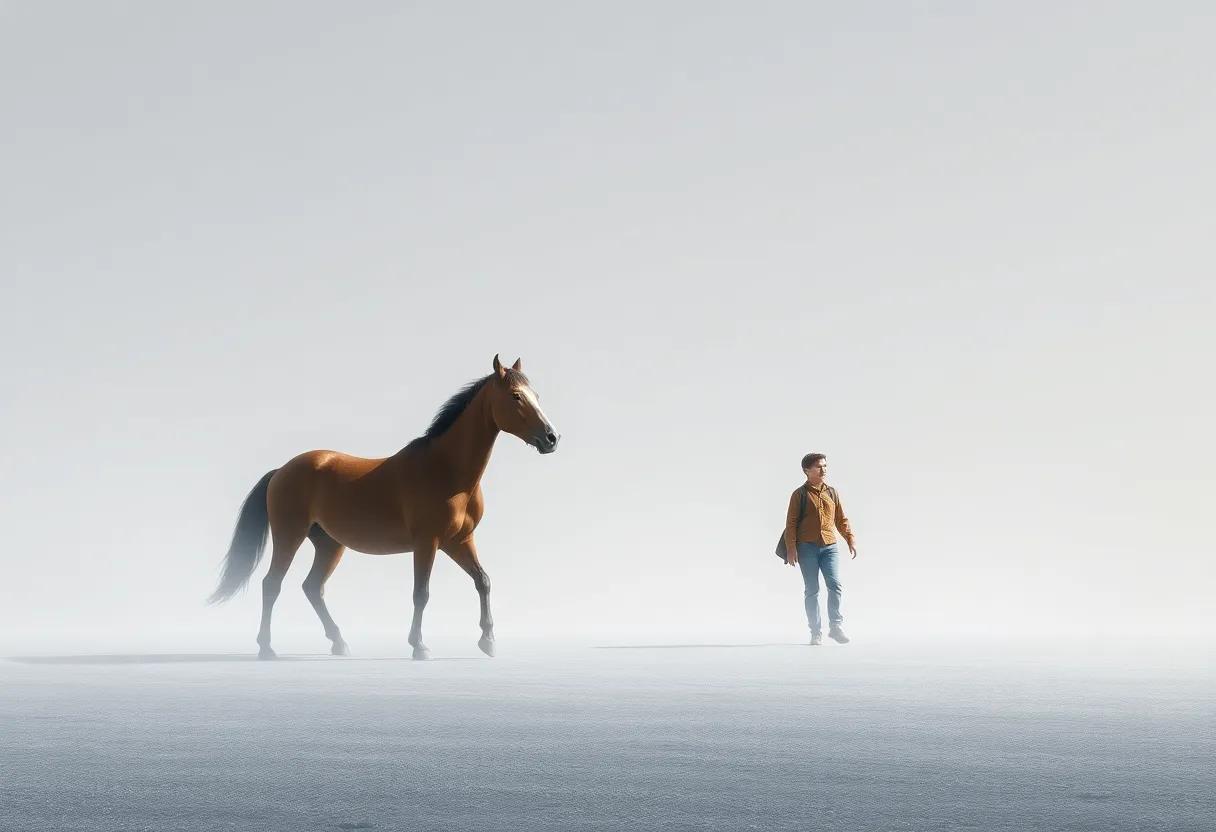
The tale of Shasta and Bree in C.S. Lewis’s enchanting world of Narnia serves as a poignant exploration of how choices cast shadows on the characters’ paths. Every decision,whether seemingly trivial or of monumental consequence,propels the narrative forward and defines the journey of our protagonists. As Shasta grapples with his identity and origins, each choice he makes—be it fleeing the oppressive confines of Calormen or trusting his newfound companion Bree—becomes a stepping stone towards self-discovery and courage. The choices they face illuminate a central theme: the constant interplay between fate and free will.
Similarly, the characters of Aravis and Hwin mirror this dichotomy, illustrating how personal decisions ripple outward, affecting not just their own fates but the destinies of those around them. Their journey emphasizes the importance of bravery, honor, and selflessness in decision-making. Consider the moments when Aravis decides to rescue her friend or when Shasta sets aside his fears to confront danger head-on. Such pivotal choices reveal their evolving characters and emphasize the broader lesson that each decision, big or small, carves the path to their ultimate destinies and enriches the vibrant tapestry of Narnian lore.
Imagery and Symbolism: Decoding the Hidden Meanings within the Text
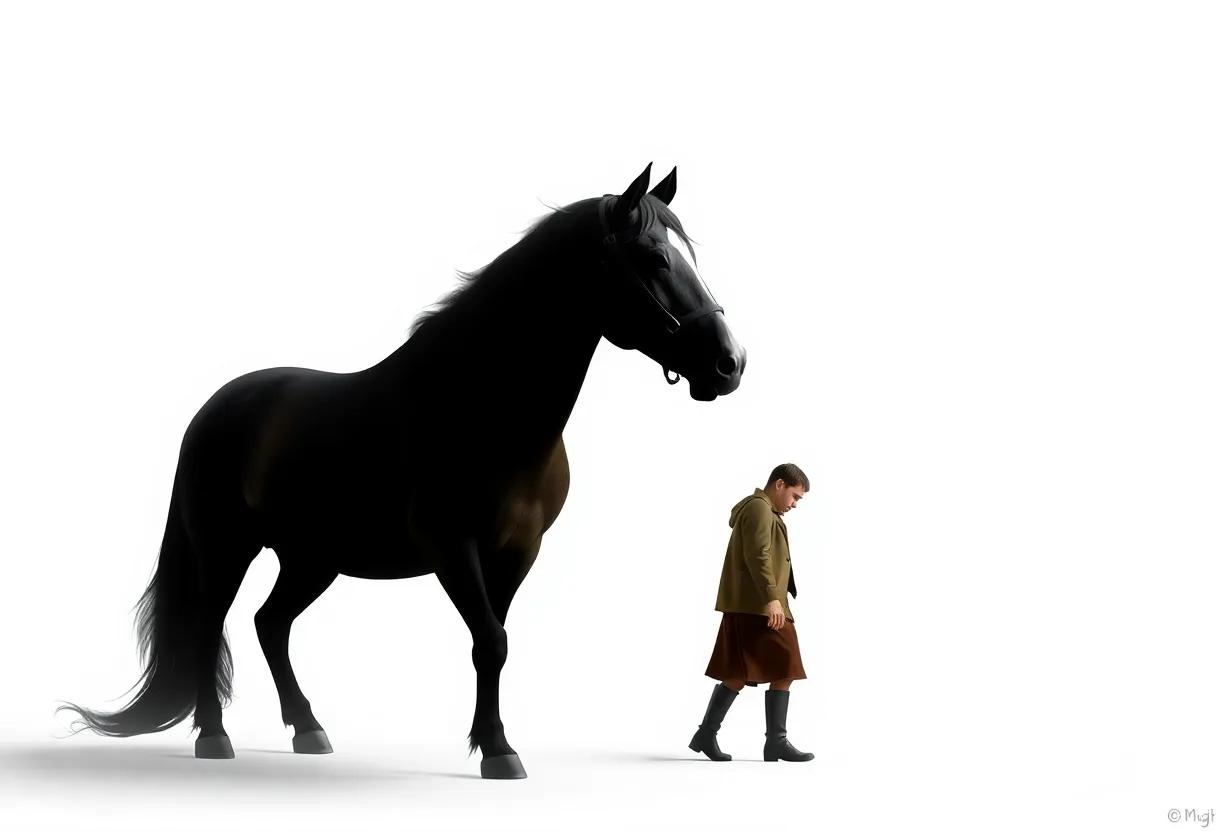
The vivid landscapes and the diverse range of characters in C.S. Lewis’s ‘The Horse and His Boy’ are rich with imagery that serves to deepen the overall narrative. Places like the cozy warmth of the rural countryside contrast starkly with the opulent, yet oppressive atmosphere of the Calormene capital. Each setting invites readers to visualize the dichotomy between the peaceful Narnia and the more tyrannical elements encountered in the East.Through descriptive phrases, Lewis paints a colorful tapestry of sights and sounds, allowing us to immerse ourselves fully in this enchanting world.
moreover, symbolism plays a significant role in conveying deeper meanings. The horse, Bree, symbolizes the journey towards self-discovery and liberation, while Shasta represents the struggle against identity confusion. This duo’s evolution is not just a physical journey; it is a profound metaphor for personal growth. Elements such as the tapestry of fate and the recurring theme of destiny emphasize the interconnectedness of actions and choices within the narrative. Ultimately, these symbols encourage readers to reflect on their own paths and the myriad influences that shape their identities.
How C.S. Lewis Masterfully Weaves Humor into a Serious Tale
C.S.Lewis possesses an extraordinary ability to blend humor into the fabric of a narrative that explores serious themes, and in “The Horse and His Boy,” this talent shines brightly. Through the whimsical dialogue and absurd situations faced by Shasta and Bree, Lewis creates moments that elicit genuine laughter, even amidst the characters’ trials and tribulations. As an example, the interactions between the talking animals and their human companions showcase a delightful absurdity that not only lightens the mood but also deepens the reader’s engagement with the story. The characters’ quirky personalities, paired with their humorous banter, serve to illuminate vital life lessons while keeping the reader entertained.
The undercurrent of humor often acts as a catalyst for reflection, inviting readers to contemplate broader themes such as identity, courage, and friendship. Lewis skillfully employs irony and witty observations, especially through characters like the bumbling, yet lovable, talking animals. the contrasting elements of the serious journey with laugh-out-loud moments create a rich tapestry that resonates with readers of all ages. through this skillful approach, lewis not only ensures that the narrative remains accessible and enjoyable, but he also fosters a more profound understanding of the emotional depth within the story’s core.
The Impact of Cultural Elements on Character Development and Plot

The world of C.S. Lewis’s Narnia is richly layered, where cultural elements intricately weave themselves into the very fabric of character journeys and plot progression. In “The Horse and His Boy,” the backdrop of Archenland and Calormen isn’t merely a setting; it serves as a dynamic force that shapes the characters’ identities and choices. For instance, the stark contrasts between the values of Archenland, which celebrates nobility and a connection to nature, and Calormen, characterized by a more oppressive hierarchy and strict social norms, deeply influence the protagonists. shasta’s quest is not just a physical journey toward self-discovery but also a metaphorical traverse through cultural implications, as he learns to differentiate between the superficial grandeur of Calormen and the authenticity that Archenland offers.
Moreover, the character dynamics within these cultural settings enrich the narrative complexity. key relationships, such as the bond between Shasta and Bree, echo themes of friendship and loyalty against the backdrop of their respective cultures. Bree, a talking horse raised in Calormen, struggles with his noble aspirations and the ingrained identity that comes from his upbringing, demonstrating how cultural backgrounds heavily impact personal growth. This theme resonates in various cultural symbols presented throughout the story, such as the significance of the star—a recurring motif that symbolizes guidance and hope across different cultural perspectives, fostering a deeper understanding of destiny and free will among the characters. In exploring how these cultural elements shape their journeys,readers gain insight not only into the characters themselves but also into the broader moral and thematic narratives that Lewis deftly constructs.
A Journey Beyond Narnia: how This Story Stands Alone in the Series

While many readers associate the Chronicles of Narnia with the adventures of Peter, Susan, Edmund, and Lucy, The Horse and His Boy carves a distinct path that feels both fresh and timeless. This tale delves into the background of Narnia itself, weaving rich cultural tapestries of Archenland and Calormen, offering a glimpse into the diverse peoples and lands that exist beyond the familiar settings of the original stories. The protagonists,Shasta and Bree,embark on a journey that is not just a physical odyssey but also a profound personal exploration. Through their trials, C.S. Lewis masterfully illustrates themes of identity, belonging, and courage, prompting readers to question the essence of who they are and where they truly belong. The subtle magic of Narnia lives on, yet it stands firmly on its own, separate from the epic battles of kings and queens.
At its core, this story showcases the importance of adventure and self-discovery. As Shasta’s journey unfolds, readers are treated to revelations that resonate deeply with the human experience.The encounters with various characters—whether they are compassionate, treacherous, or wise—serve as mirrors reflecting Shasta’s inner struggles and growth. Notably, the following elements highlight how this narrative stands uniquely within the series:
- Character-Driven Narrative: The focus on Shasta’s viewpoint offers a different lens on themes of loyalty and courage.
- Exploration of Culture: The vivid depictions of Archenland and Calormen provide a rich cultural context rarely explored in the other books.
- Subtle Spiritual Undertones: The journey emphasizes faith and providence without overshadowing the characters’ personal journeys.
comparative Analysis: The Horse and His Boy in the Context of Narn
The tapestry of Narnia is woven with myriad threads, and The horse and His Boy adds a distinct hue to this marvelous landscape. This tale diverges from the central narrative arc of the Pevensies, presenting a unique perspective through the eyes of Shasta and Bree—the horse.Set against the backdrop of a bustling kingdom and the treacherous journey from the land of Calormen to archenland, it prompts readers to explore core themes of identity, freedom, and belonging.The characters embody the complexities of social class, with Shasta experiencing the dynamics of a servant life juxtaposed against the nobility of Archenland, while Bree represents the duality of physical prowess and emotional vulnerability that speaks to anyone seeking their place in the world.
In comparing Shasta’s journey with that of the Pevensies, we can outline notable contrasts and shared experiences:
| Aspect | Shasta and Bree | The Pevensies |
|---|---|---|
| Background | Raised in poverty; half-truths | Royalty; initially unaware of their status |
| Motivation | seeking freedom and identity | Restoration and adventure |
| Obstacles | Deceit, culture clash | Witch, battle for narnia |
Both narratives entwine a journey towards self-discovery, where the protagonists confront inner and outer demons. Each character’s evolution is a mirror to their environments and experiences, reinforcing the universal themes of growth amidst adversity. In essence, while The Horse and His Boy may stand apart in its cultural setting within the Narnian canon, its exploration of profound questions about self and belonging resonates deeply with the overarching saga of the Chronicles of Narnia.
C.S. Lewis’s Legacy: His Influence on Fantasy Literature and Moral Design
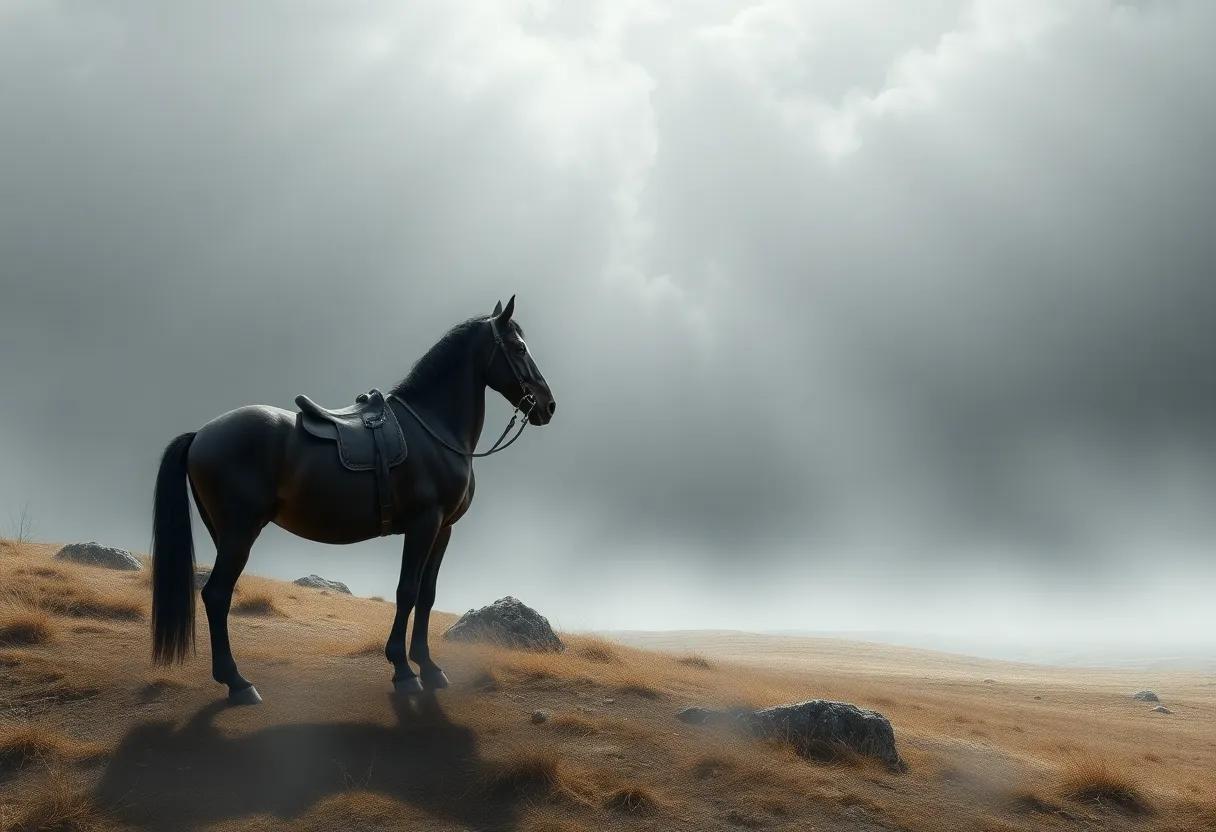
C.S. Lewis’s influence on fantasy literature is profound, weaving rich tapestries of imagination that continue to inspire writers and readers alike. His ability to craft compelling narratives is evident in works like The Horse and His Boy, where he invites readers to journey through the enchanting landscapes of Narnia while tackling complex themes of identity, courage, and faith. Lewis’s unique blend of allegory and fantasy allows a seamless exploration of moral dilemmas, as characters navigate the treacherous waters of truth and personal growth. The impact of his moral design can be traced through the characters’ evolution,where personal virtues often shine in the face of adversity.
Moreover, Lewis’s legacy extends far beyond the confines of his own narrative worlds; it has shaped the broader genre of fantasy literature. Many contemporary authors draw inspiration from his seamless integration of moral philosophy and fantastical elements, creating worlds imbued with deeper meanings. The essence of Lewis’s storytelling can be distilled into several key components:
- Character development: Characters often embark on profound journeys, challenging their beliefs and growing in virtue.
- Allegorical Depth: Lewis’s tales often serve as allegories for broader moral and spiritual truths.
- Imaginary Realms: His evocative settings cultivate a sense of wonder, encouraging readers to explore their own beliefs.
| Key Themes | Influence on Fantasy Literature |
|---|---|
| Identity | Shapes character arcs and personal journeys in modern fantasy. |
| Courage | Inspires narratives of heroism and adventure. |
| Faith | Encourages deeper reflections in fantastical quests. |
Final Thoughts
As we draw the curtain on this reflective exploration of C.S. Lewis’s “The horse and His Boy,” we are reminded that the journey into Narnia transcends mere fantasy; it is a pilgrimage of the heart and mind. Through the rich tapestry of adventure woven by Lewis, we encounter profound truths about identity, friendship, and the courage that often lies dormant within us all.
The sprawling landscapes of Narnia, vividly painted through the eyes of Shasta and Bree, beckon not only with the allure of adventure but with an invitation to ponder our own paths in life. Lewis masterfully navigates themes of destiny and belonging, encouraging us to embrace the unknown and trust in the unseen forces that guide our own stories.
As we close this chapter,we are left with the echoes of laughter,the stirring calls of bravery,and the gentle reminders that every journey,whether through enchanted realms or the quieter corridors of our everyday lives,holds the potential for discovery and transformation. “The Horse and His Boy” is not just a tale of two unlikely companions; it is a celebration of the very essence of what it means to seek, to question, and ultimately, to belong.
So, let us carry forth the wisdom gleaned from these pages and, like Shasta and Bree, embark on our own journeys of self-discovery, armed with the knowledge that, sometimes, the truest adventure lies not in our destination but in the steadfast resilience to forge ahead. Thank you for joining me on this reflective review—may your own paths be filled with wonder and your hearts open to the whispers of adventure that await.

